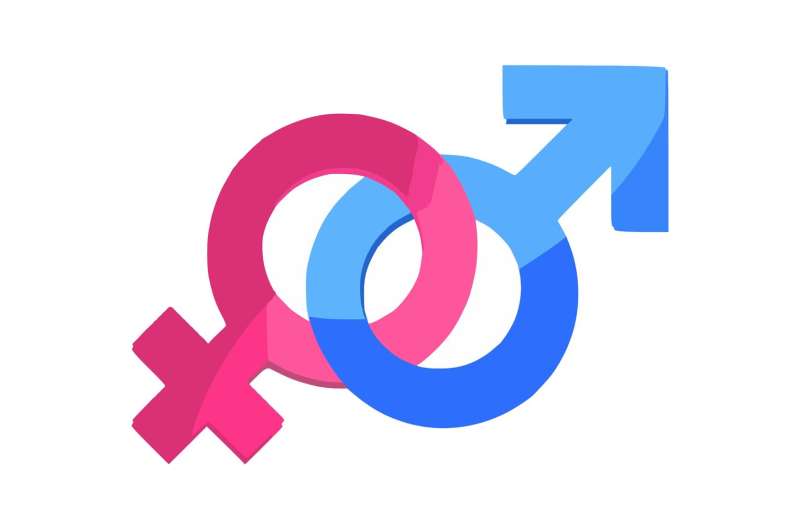Study suggests discontinuation of gender-affirming hormones in those who start treatment as adolescents is rare

Among individuals treated at a gender identity clinic in The Netherlands, those who used puberty suppressing treatment before the age of 18 and then started gender-affirming hormones, 98% (704 out of 720) continued use at follow-up, according to an observational study published in The Lancet Child & Adolescent Health journal.
Marianne van der Loos, MD at Amsterdam UMC, Vrije Universiteit Medical Center Amsterdam, The Netherlands, says, "Our study looked at individuals treated at a gender identity clinic in The Netherlands, which has offered puberty suppression treatment followed by gender-affirming hormones to transgender people for over 20 years, to understand how many people continued to use hormone therapy. We found that the vast majority of people continued using gender-affirming hormones, which is reassuring in the context of recent increased public concern regarding regret of transitioning."
In 1998, The Netherlands was the first country to introduce a new treatment protocol for young people diagnosed with gender dysphoria who are under the age of 18. After a thorough diagnostic evaluation, adolescents are offered reversible puberty suppression treatment (using a gonadotropin-releasing hormone agonist). This pauses the physical changes associated with puberty that can be stressful for adolescents with gender dysphoria and gives them time to explore their gender identity. Those who continue to desire to transition medically can subsequently begin gender-affirming hormone treatment after age 15–16, which means taking medications (i.e., oestradiol or testosterone) to induce physical feminization or masculinization in a way that aligns with their gender identity.
However, puberty suppression and gender-affirming hormone treatment for people under 18 years old has recently become a subject of public debate and in some countries legal measures have been taken to ban or limit its use, such as in the U.S. and U.K. Although short-term studies have demonstrated the beneficial effects of puberty suppression treatment for adolescents' mental and physical health, long-term follow-up data are lacking.
The study used medical records from a gender identity clinic in Amsterdam. Individuals were included if they used puberty suppressing treatment before the age of 18 for a minimum of three months before going on to use gender-affirming hormones. To investigate the proportion of these people who continued using treatment at follow-up, the study linked their records to the nationwide prescription registry to determine if individuals were still receiving a prescription for gender-affirming hormones at the end of data collection (December 2018). The follow-up periods varied by patient, with the most recent patients having the shortest follow-up period. The authors stress that results from patients with shorter follow-up periods should be regarded with caution.
Included in the study were 720 people, of whom 31% (220) people were assigned male at birth (AMAB) and 69% (500) assigned female at birth (AFAB). For AMAB people, the median age was 14 years old when starting puberty suppressing treatment and 20 years old at the end of follow-up. For AFAB people, the median age was 16 when starting puberty blockers and 19 years old at the end of follow-up.
Out of 720 individuals in the study, 704 continued using gender-affirming hormones until follow up—amounting to 98% of individuals continuing hormone therapy.
Regarding the 2% (16 out of 720) of people no longer using gender-affirming hormones, it remains unknown whether they stopped using hormones because they regretted transitioning or changing their gender. The authors stress there are several plausible explanations, including lack of knowledge on the importance of continuing hormone treatment after gonadectomy (surgical removal of either the testes or the ovaries), or participants with non-binary gender identity only wanting to use hormone treatment for a short period of time. The authors recommend that future research should identify reasons why a small number of people who initiate this treatment as adolescents subsequently stop taking gender-affirming hormones.
The study did not identify any factors associated with a higher chance of stopping gender-affirming hormone treatment. The individuals' age or the year when they first visited the clinic, when they started puberty suppressing treatment, when they started gender-affirming hormone treatment, and whether they had undergone a gonadectomy were not associated with discontinuation.
An increase in referrals of AFAB individuals to this gender identity clinic after 2012 had been documented, so whether discontinuation rates were different before this year compared to afterward was also investigated. The results suggest that there is no difference between continuation rates before 2012 compared to afterwards.
The authors note several limitations of their study. Gender-affirming hormones being prescribed does not necessarily mean an individual is taking the medication as prescribed, potentially leading to an overestimation in the number of individuals continuing use. On the other hand, prescriptions might not have been recorded for anyone obtaining these medications outside the regular health system, potentially underestimating the number of individuals continuing use.
More information: Continuation of gender-affirming hormones in transgender people starting puberty suppression in adolescence: a cohort study in the Netherlands, The Lancet Child & Adolescent Health (2022). DOI: 10.1016/S2352-4642(22)00254-1



















